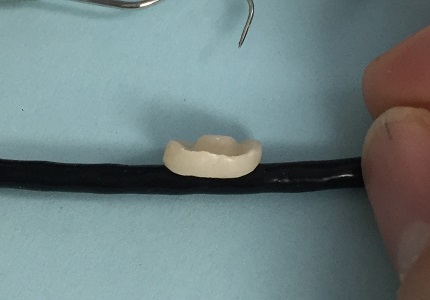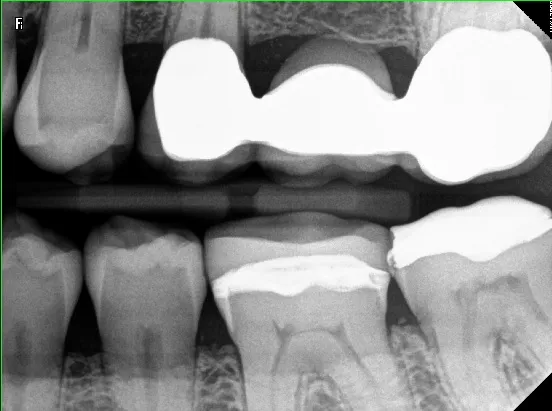The ugly side of in office milling of dental crowns, which are mostly cerec.
In office milling of dental crowns is gaining in popularity. Unfortunately many dentists that are doing these in office crowns either do not have the best technology or they are just plain old not very good at it.
In office dental crowns such as cerec are often very easy to spot.
What are some of the signs of an in office crown? Firstly most have terrible occlusal anatomy and look more like a white blob than a tooth. Secondly the fit is often horrible and the phrase “resting in a sea of cement” is quite accurate. The margins are often awful as well. Finally the material is weak. In office milling is weaker than press e.max and much weaker than alternative materials available. Therefore we constantly see fractures and breakages. Frankly, the vast majority of the mills for in office use are just not good enough to use the best materials. The mills typically rotate on fewer axis as well, making the ability to design a nice crown more difficult.
Why are the crowns often so bad?
The dentists are very literally learning how to do them properly on the patients and the learning curve is steep and long. Some never seem to grasp it. In a smaller practice the cost of the mill and software and other equipment causes dentists to continually use the technology even when they know their results are well below what their lab can do. I’m not going to spend a ton of time bashing them. There are some that are good at it. The vast majority I see are barely acceptable to outright terrible.
The doctors that use the technology like to claim that it’s the user not the technology. This only proves the point the technology is insufficient if many of the users have issues. If we see an awful crown in our practice it is likely to be an in office made crown despite the fact they represent a very small single digit percentage of the crowns we see. We have multiple patients that break every single one of these in office milling disasters. The worst dentist using the worst lab couldn’t get such bad outcomes. It’s simply impossible to be that bad. We will use this page to start posting some of the disasters we see. To date they are from all different practices from all over. It’s not an isolated issue.
Techniques that in office milling dentists tend to use.
Many are taught that bonding is all they need to make the crown work. They throw out all mechanical forms of retention and rely entirely on the chemical and micro-mechanical retention. This often fails quickly. Two major examples are the flat top prep and the endocrown.
The flat top prep.
This is just stupid. The dentists simply removes the top half of the tooth and hopes the bond will hold a crown to that surface.



Endocrown
This design has merit but the in office mills struggle to get this accurate enough to work well. Remember milling requires overmilling and the larger the bur the more overmilling occurs. Thus internal fit is not as great. Margins can still be just as good but not the internal fit. An endocrown relies on a lot of good internal fit. Not going to work very well in anyone’s hands. The dentists that can get it to work are highly skilled but would still have better results with a lab crown.


Results of in office milling
These issues have more to do with the technology itself and the clinical abilities of the dentist.
Poor fit
This is often one of the biggest issues. Margins are often very poor as you can see on many cases here.

Occlusal anatomy from in office milling
Tooth occlusal anatomy is not something we feel is terribly critical. However, our lab does do a nice job of making the top of a crown look like a tooth. We do not spend a ton of time making our composites have perfect anatomy either. However, lack of anatomy of a crown is a tell that the mill is not capable of making precise cuts. It’s more of a grinder than a milling machine.

Breakage of the in office milling crown or inlay or onlay
These in office crowns are a weaker material. There are stronger materials out there and as technology advances there will be stronger and stronger materials. The dental lab will always have a better mill and thus stronger material though. We see these in office crowns break A LOT.


Excess cement left everywhere
This can happen on any crown. However, we see it far more on in office inlays and onlays almost exclusively. This is likely due to the fact they have poor fit and sit in a sea of cement or resin. This of course leads to decay and problems on other teeth.


